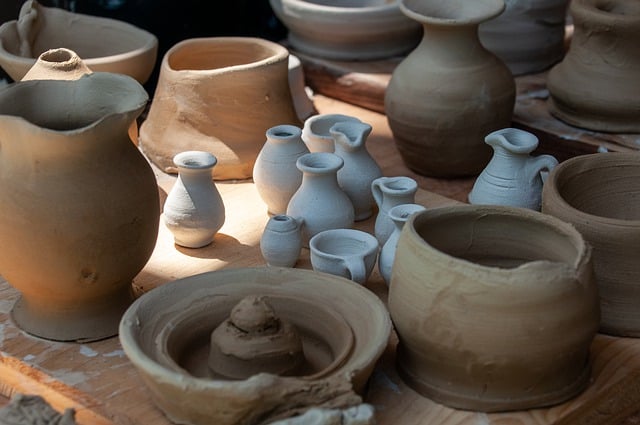What are Traditional Crafts?

Have you ever wondered what makes traditional crafts so appealing? Traditional crafts are items used in daily life that possess both functional and aesthetic qualities, achieved through their materials, techniques, and designs. These are often deeply connected to the culture and history of the region where they are made.
One way to explore traditional crafts is by looking at those designated as "traditional crafts" by the Japanese Ministry of Economy, Trade, and Industry. As of November 2023, 241 such items have been designated across Japan. Including those recognized by local governments, this number exceeds 1,000. Traditional crafts encompass a wide variety of categories, from ceramics and woodcrafts to lacquerware, metalwork, and glasswork. Each craft reflects the cultural and historical backdrop of its region, offering a deep and enriching experience for those who take the time to appreciate it.
If you're interested in bringing a piece of Japanese craftsmanship into your own home, take a look at our curated collection of interior boards made with traditional Nishijin-ori kimono fabric. These unique fabric boards combine centuries of artistic tradition with modern home décor, offering a touch of Japan’s rich heritage. Visit our site at Kimono Art Interior to explore more.
In this article, we will introduce six key qualities that make traditional crafts special.
6 Reasons Traditional Japanese Crafts Stand Out

1. Handcrafted by Skilled Artisans
The essence of traditional crafts lies in their craftsmanship. Many of these products are handmade, often by artisans who have spent decades perfecting their craft. These skills are passed down through generations, adding layers of history and meaning to each item. When you hold one of these pieces, you feel the care, attention, and artistry that went into its creation. Each item carries a sense of warmth that only handmade objects can provide.
2. Balancing Usability and Aesthetics
Traditional crafts have been loved for centuries not only because of their functionality but also because of their beauty. For example, Edo Kiriko, a traditional cut glass, is not only functional but also visually stunning. The intricate designs, cut by skilled hands, make it a joy to look at, and its shape is perfect for savoring your drink. The seamless blend of form and function is one of the reasons why traditional crafts remain so cherished.
3. Embracing the Beauty of Aging
Traditional crafts are designed to age gracefully. Whether it’s bamboo crafts that change color over time or pottery that develops fine cracks called “crazing,” these items evolve as they are used. This aging process adds depth and character to the piece, making it more beautiful and valuable as the years go by. Metal crafts, like Japanese ironware, may develop rust over time, but with proper care, this “patina” enhances the richness of the material.
4. Durable and Repairable
Unlike many modern products, traditional crafts are designed to last. Even if they break, they can often be repaired by the same artisans who made them. For example, if your pottery breaks, it can be repaired using a technique called “kintsugi,” where the cracks are filled with lacquer and gold. Lacquerware can also be refinished if it becomes scratched or worn. The ability to repair these items means they can be cherished for a lifetime and even passed down through generations.
5. A Connection to Japan’s History and Regional Identity
Each piece of traditional craft carries with it the history of its region. The techniques, materials, and designs used in these crafts often reflect the unique culture of the area where they are made. By learning about and purchasing these crafts, you not only support the artisans who make them but also gain a deeper understanding of Japan’s rich history and cultural diversity.
6. Harmony with Nature
Traditional crafts are often made from natural materials sourced locally, making them eco-friendly. For example, lacquerware uses sap from lacquer trees, which grow in humid climates. The production of traditional crafts also tends to focus on sustainability, using only the materials needed and minimizing waste. This harmony with nature is a key value of traditional Japanese crafts, and it’s something that resonates with eco-conscious consumers today.
The Challenges Facing Traditional Crafts: 5 Obstacles to Overcome

While traditional crafts are full of beauty and history, they face several challenges in today's modern world. Let’s take a look at five key issues.
1. The Perception that “Traditional” Means “Old-fashioned”
Some younger generations might associate the word “traditional” with being outdated or old-fashioned. In a world where new products and trends emerge rapidly, it’s easy to overlook the timeless appeal of traditional crafts. However, the fact that these crafts have been passed down for generations speaks to their enduring value. Finding ways to modernize the image of these crafts without losing their essence is key to keeping them relevant.
2. Changing Lifestyles: The Rise of Convenience
As lifestyles change, so do buying habits. Many consumers today prefer cheap, convenient products that fit their busy lives. The peak of traditional craft sales was during Japan's economic bubble, when these items were popular as wedding gifts or event tokens. However, with the shift towards smaller family units and less emphasis on traditional rituals, the market for these crafts has declined. Artisans are now seeking ways to adapt their products to modern needs, such as by creating more compact or affordable versions of traditional items.
3. Lack of Exposure in Everyday Life
As modern, inexpensive products have become the norm, traditional crafts have become less familiar to younger generations. Without exposure to these crafts in daily life, it can be difficult for people to understand their value. Reintroducing traditional crafts into modern life through education and exposure is essential to bridging this gap.
4. Shift in How People Shop
In the past, traditional crafts were often sold in department stores, where customers could see and touch the items before buying. Today, more people shop online, where these crafts can easily be overlooked if they’re not effectively showcased. Brands that adapt to online shopping trends and create engaging digital experiences are more likely to succeed.
5. Higher Price Compared to Mass-Produced Items
Traditional crafts are often more expensive than mass-produced products, which can be a barrier for some consumers. While mass-produced items serve their purpose, traditional crafts offer something more—an opportunity to connect with history, culture, and artistry. Communicating this added value is essential in helping potential customers understand why traditional crafts are worth the investment.
5 Traditional Craft Categories to Discover
Let’s take a look at five representative categories of traditional Japanese crafts:
1. Ceramics
Japanese ceramics, or “yakimono,” refer to pottery and porcelain. Some famous styles include Mino ware from Gifu Prefecture, known for its versatility, and Arita ware from Saga Prefecture, Japan’s first porcelain production. Vibrant Kutani ware from Ishikawa Prefecture is also renowned for its colorful designs. Each region has its own distinct style and history, and many areas host regular pottery markets where you can find your own favorite piece.
2. Lacquerware
Lacquerware is known for its glossy finish and durability. It can withstand hot liquids, making it perfect for serving soups. There are 23 officially recognized lacquerware production areas in Japan, including Wajima and Yamanaka in Ishikawa Prefecture and Echizen in Fukui Prefecture. These regions produce some of the finest lacquerware in the country.
3. Metalwork
Japanese metal crafts include ironware, such as Nambu iron kettles from Iwate Prefecture, which are known for adding iron to the water during boiling. Kanazawa's gold leaf and Tokyo’s silverware are also famous examples of Japanese metal crafts. These items are celebrated for their durability and the richness they bring to daily life.
4. Glass Art
Japanese glass art can be divided into “blown glass” and “cut glass.” Edo Kiriko and Satsuma Kiriko are famous cut glass styles, while Ryukyu glass from Okinawa, known for its beautiful colors made from recycled glass, represents the blown glass tradition.
5. Japanese Swords
Japanese swords, or "nihonto," are not only weapons but also highly valued art pieces. The blades are crafted using a steel called “tamahagane” and are forged through a process known as “tamahagane.” Many sword collections are displayed in museums, offering a glimpse into the craftsmanship behind these iconic items.
Summary
Traditional Japanese crafts offer an incredible connection to history, culture, and artistry. They are more than just functional items—they represent centuries of skilled craftsmanship and regional heritage. Whether you're interested in the timeless beauty of ceramics, the durability of lacquerware, or the elegance of glasswork, traditional crafts provide a unique way to enrich your home and lifestyle. To explore more Japanese traditional crafts, visit Kimono Art Interior for a curated selection of pieces that blend tradition with modern design.

